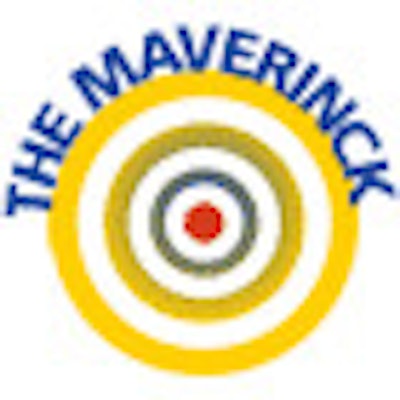
Editor's note: In his regular column, Europe's very own maverick radiologist, Dr. Peter Rinck, addresses the latest controversial topic. Find out now what's on his mind.
On the shelves of my office I have all the textbooks and encyclopedias I need -- basically more information than I can ever read, let alone digest and understand. Still, if I want to know something about facts, names, even diseases, I usually go straight to Wikipedia, as everybody does today.
My recent personal experience with Wikipedia has not been positive. I was reading its information about MRI, and particular its history:1
Nuclear magnetic resonance imaging is a relatively new technology first developed at the University of Nottingham, England. The first nuclear magnetic resonance image was published in 1973 [two references] and the first cross-sectional image of a living mouse was published in January 1974 [one reference]. The first studies performed on humans were published in 1977 [two references]. Dr. Raymond Damadian, an Armenian-American scientist, who while researching the analytical properties of magnetic resonance, created the world's first magnetic resonance imaging machine in 1972 and was awarded a U.S. patent for the first MRI machine in 1974. He subsequently went on to perform the first MRI body scan of a human being on July 3rd 1977."
 Dr. Peter Rinck, PhD, Maître de Conférence/adjunct professor of medical imaging at the University of Mons, Belgium.
Dr. Peter Rinck, PhD, Maître de Conférence/adjunct professor of medical imaging at the University of Mons, Belgium.Since I was involved in MRI since its early days, I know exactly how, when, and what happened -- and who did it. A compressed overview is given by the European MR Forum.2
MRI was not invented in Nottingham and there is no connection between the references given and the claim. The references cite two articles by Paul Lauterbur, PhD, an American who invented MRI in September 1971 and published the technique and the first results in 1973. The third reference in the Wikipedia article is an obscure paper in an online magazine. The statements and references in the following sentences are plain wrong. There was no MRI machine in 1972, nor was there a U.S. patent for the first MRI machine in 1974. This is sloppy work; even worse, the facts have been fabricated to promote a person who has claimed for decades that he is the inventor of MRI.
One of Wikipedia's objectives is that articles should be based on reliable, third-party, published sources with a reputation for fact-checking and accuracy. This doesn't work since contributors can be anonymous and contents are not checked by authorities in the field. How do you control around 90,000 active contributors, check their entries, and vouch for millions of them? At this point, crowd-sourcing becomes a pipe dream and doesn't solve the problems of very limited credibility of a possible source of facts such as Wikipedia.
"Wiki" is a Hawaiian word meaning "fast" or "quick"; "pedia" has Greek roots and stands for "education." Somehow, both components don't fit into one concept. In science, avoid Wikipedia. In life, think twice before you trust Wikipedia -- for crossword puzzles, though, Wikipedia is perfect.
Moving on to printed information, I divide it into authoritative, trustworthy, less trustworthy, and most likely wrong. I also use this scale to rate scientific journals, some of which can be trusted, some of which publish articles of dubious character. I have also learned that you can't rely upon people who claim that their business is self-regulated and controlled -- at the "highest ethical standards" -- such as banks, politicians, the secret services, and scientific journals and reference media.
In 1942, the U.S. sociologist Robert Merton wrote: "The self control mechanism of science is based on a social agreement: Authors should accurately report about their findings, reviewers should judge papers only on their scientific quality, and editors should select only the best scientific papers to communicate and advance scientific knowledge."3
Unfortunately, this is no longer the basis for selection and publication in most scientific journals. There is no more social agreement. Egocentricity has killed it. Authors, editors, and publishers have different agendas and goals, and in many instances the self-control mechanisms are not properly obeyed, most likely not even properly understood.
If we look at the major radiological journals, only few of them force their prospective contributors to comply with strict guidelines, including a statement about possible nonscientific interests, be they commercial, financial, or political. Certain publications even demand that one or several contributors warrant the contents of their article to be accurate and true, taking responsibility for the integrity of the publication.
By contrast, in most journals there is also a laissez-faire attitude, a laxity toward carefulness, accurateness, and exactness. For example, earlier this month I found an interesting section with several articles about the development of global population in a monthly publication (whose name should not be mentioned). It was accompanied by beautifully colored graphs in a hand-painted look, but already the first one was wrong: The captions of the different curves were incorrectly attributed. Perhaps it was an honest mistake, but I checked the figures of the next article -- they looked too pretty, the curves of population growth too smooth and shaped too nicely to be real. I stopped reading because I didn't trust the contents any more. Editing mistakes and easy results rapidly damage the reputation of a publication.
References
- Anonymous. Magnetic resonance imaging. http://en.wikipedia.org/wiki/Magnetic_resonance_imaging. Accessed 6 August 2011.
- EMRF: The history of magnetic resonance imaging. http://www.emrf.org/EMRF%20FAQs/FAQs%20History%20of%20MRI%20page03.htm. Accessed 10 August 2011.
- Merton RK. Science and Technology in a Democratic Order. Journal of Legal and Political Sociology. 1942;1:115-126.
The comments and observations expressed herein do not necessarily reflect the opinions of AuntMinnieEurope.com, nor should they be construed as an endorsement or admonishment of any particular vendor, analyst, industry consultant, or consulting group.


















